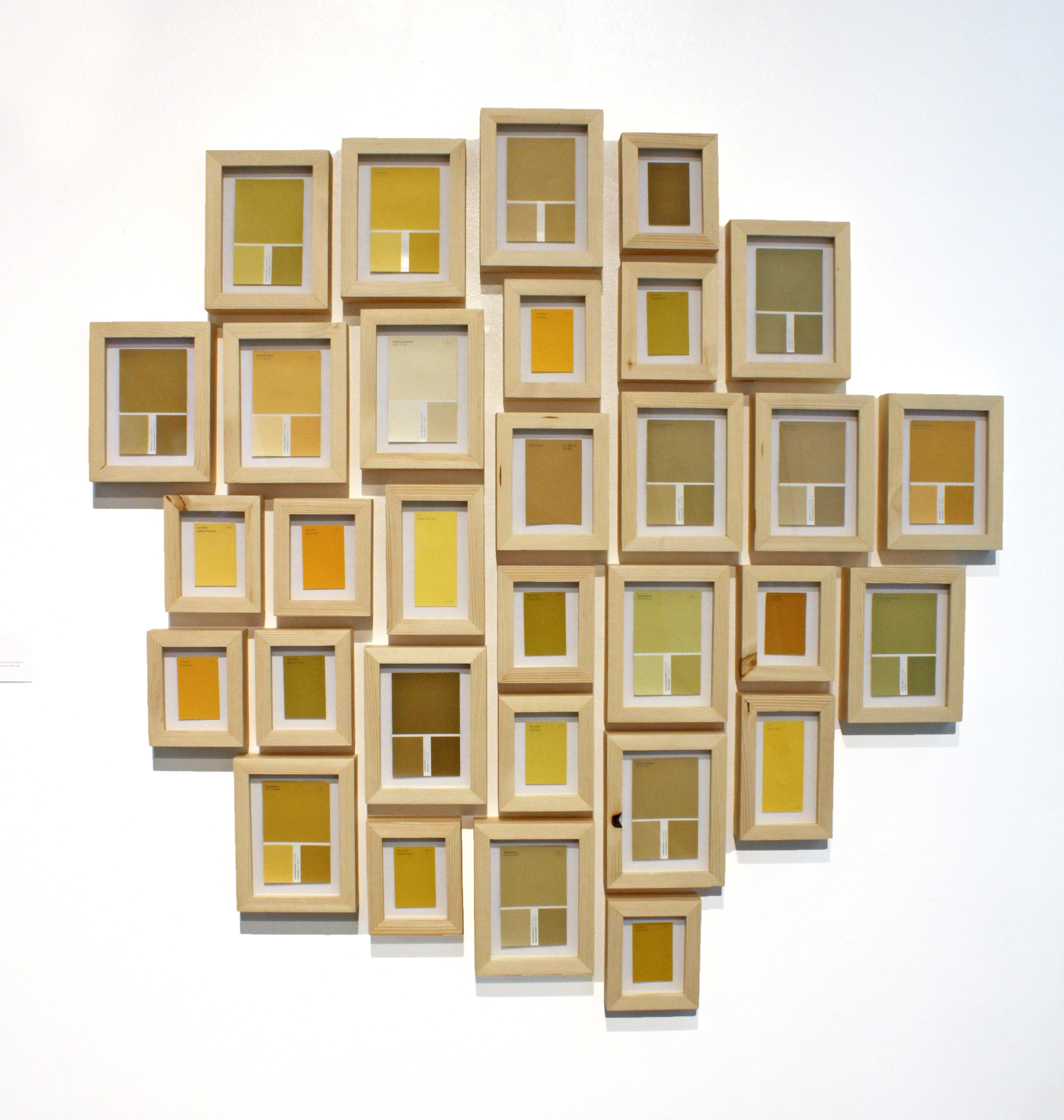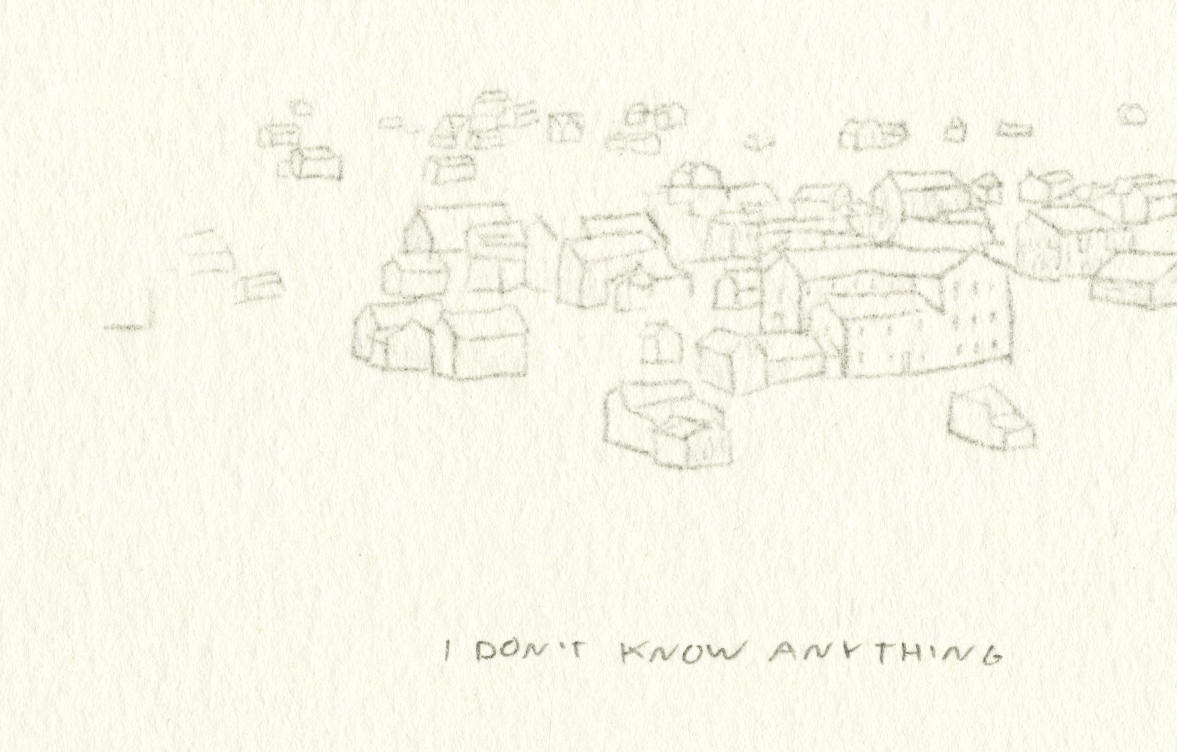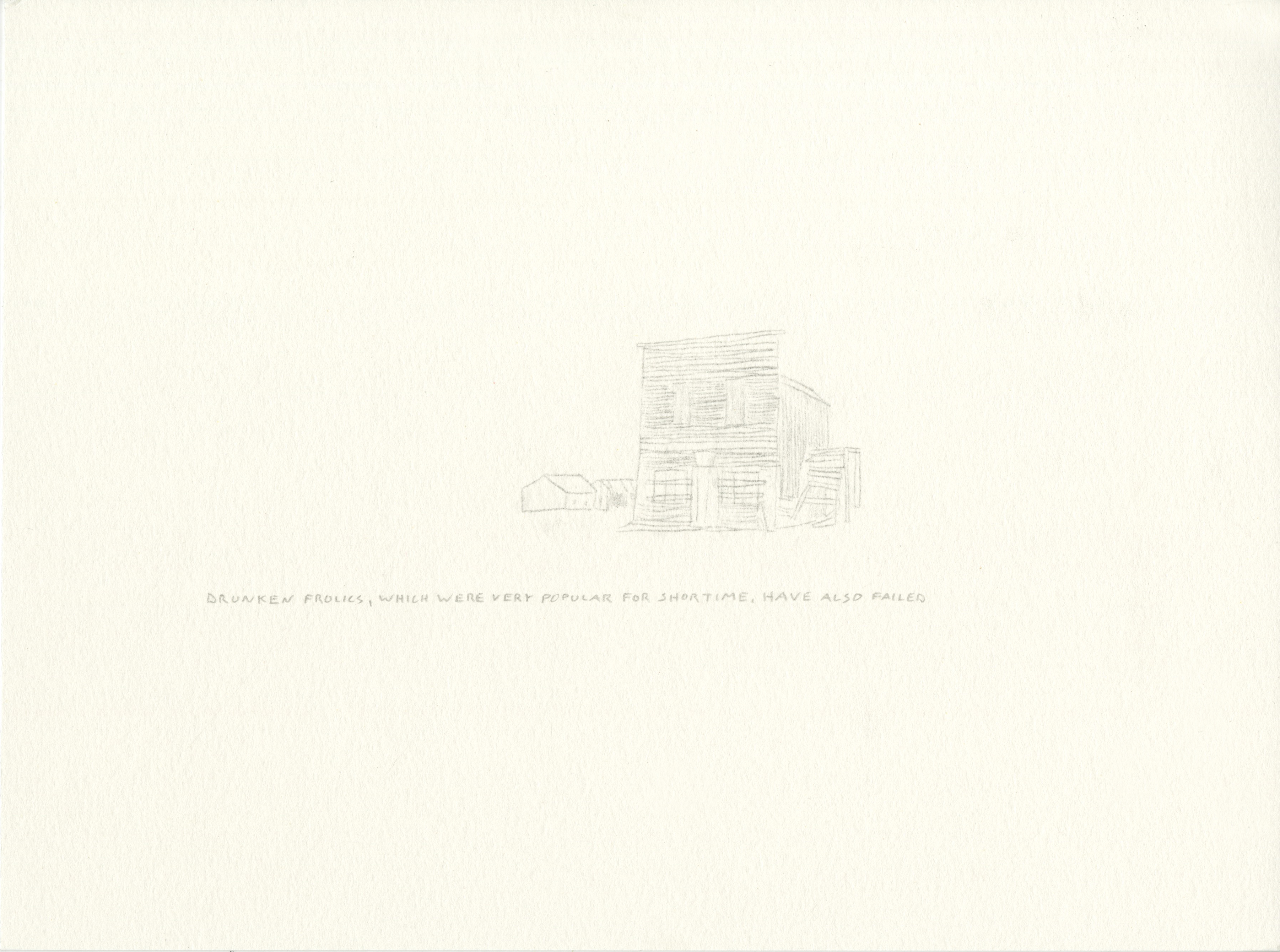GOLD FEVER
2016
“There are only two tragedies in this world: not getting the thing you want and getting the thing you want.”
— Oscar Wilde
GOLD FEVER is about searching for something that you think is going to make your life better despite any evidence that it may not. The content for the exhibition is based off of multiple voices: historical fact, the diaries of miners, myth, and misinterpreted song lyrics, intended to complicate the way the history of the American gold rush of 1849 is told. The romanticization of the gold rush often omits the realities of failure, delusion, violence, greed, racism, and the mistreatment of the natural world, that unfortunately reveal more about ourselves than our successes. The poetics of failure and the pathos of facing it, as well as our continual search for ways to behave better, is, in its own right, tragic and beautiful. GOLD FEVER is a symptom of our greatest hopes, which is to say our greatest fears that haven't changed much since 1849.



Please Refrain From Breathing
Wooden 4” x 4” bisected with a section of its own sawdust
4” x 4” x 5”9’ (the height of the artist)

How Lovely It Is Not To Have To Live Forever 24k gold leaf, ink on BFK
42” x 84”
This drawing was made by outlining the shape of a mountain in 24-kt gold leaf. Every other line attempted to follow the contours of the first golden horizon line. You can see that an imperfection in one line will transfer to the next and grow stronger with each generation of subsequent lines.
Hiram Pierce was a level-headed man who left his family out east because he saw other reputable men going west in search for gold and didn’t want to feel foolish staying behind and working for wage labor. Gold turns the heads of the wisest.
Hiram wrote his wife Sarah in 1850, one year after arriving in California and still having found no gold…
“I feel uneasy about my back and legs. I rather fear for my future. I feel most deeply to regret that I have earned nothing in order to make any remittance. I am sorry I cannot fix things up as usual.”
Sarah says, “Come home.”
In the next letter to Sarah, Hiram writes, “Yesterday I saw my neighbor pick up a $100 nugget.”
He can’t go home empty handed.
By 1851 the lone miner with the pan is done. All the surface gold is gone. Hydraulic mining plus deep shaft mining funded by large companies take over and miners are forced to return to the very wage labor that they left back east. California betrays them.
In 1851 Hiram returns home to Sarah and his family. In his daughter’s diary she notes that Hiram, “never got over his California fear,” and planned on returning but died before he could. After his death, five of his seven kids move to California.




Hopeless Gold Digger
Golden paint swatches
Dimension vary
Every time I go to the hardware store I find and collect the paint swatches that have the word gold in their title. This is an ongoing project that will continue to grow with my lifelong search for gold.



Pickled Stick
12” x 9” Wood, vinyl, glass, water, sugar, salt, stick
Stones from 2 million years ago have survived but sticks haven’t. I’d like to give the stick a chance.

No Amount Of Moral Instruction Could Have Prepared Young Alfred For San Francisco 12” x 9” Wood, vinyl, 24k playing cards

Ghost Towns
Graphite tracings
9” x 12”
Graphite tracings
9” x 12”
The history of the Gold Rush is a result of a collective misremembering that was developed by the dominant Anglo-American society as they colonized California and effectively wrote that history. But the truth is, two decades after gold was discovered, 120,000, or 4/5 of California native people were wiped out. These drawings attempt to complicate the way that history is told by looking honestly at its realities. Early mines were quite diverse: Chileans, Mexicans, Chinese, etc. Racism didn’t begin to appear overtly until the idea that the gold was limited became apparent relative to the high numbers who were looking for it. This is when nationalism and racism begin to resemble what one heart broken wife who stayed back east thought of the gold rush, “like an ugly dream.”






















I Often Think Of Writing Home
Ink on BFK
16.5” x 22”
What I imagine a letter home from a gold miner would look like.


The Protector Of Desperate And Hopeless Causes
Wood, rope, slipknot, rock
26" X 38"
The longest running laboratory experiment in the world is called, The Pitch Drop Experiment. It has been running for 83 years at Queensland University in Australia. In 1927 Professor Parnell heated a sample of pitch (100 billion times more viscous than water) and poured it into a glass funnel with a sealed stem. Three years were allowed for the pitch to settle, and in 1930 the sealed stem was cut. From that date on the pitch has slowly dripped out of the funnel— so slowly that now, 83 years later, the ninth drop is only just fully formed. During the 83 years of the experiment the pitch has dropped eight times and nobody has actually seen it drop. There is a live webcam that people check obsessively to see if they are lucky enough to check in at the moment to see the pitch drop. This has something to do with being in the right place at the right time which was the fundamental law of the gold miner. The gold was quite simply in some places and not in others, so men could be 20 yards away from each other and working just as hard, but one man strikes gold and one man doesn’t, one man makes his fortune, one man doesn’t.


